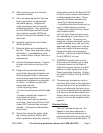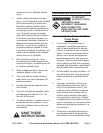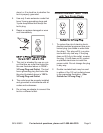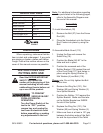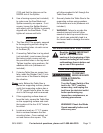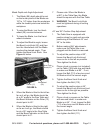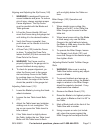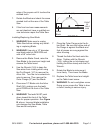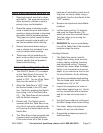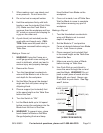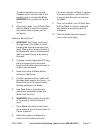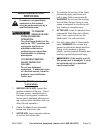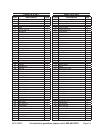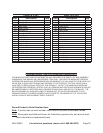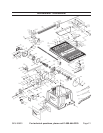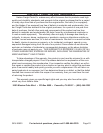
SKU 66630 For technical questions, please call 1-800-444-3353. Page 15
Work Piece and Work Area Set Up
Designate a work area that is clean 1.
and well-lit. The work area must not
allow access by children or pets to
prevent injury and distraction.
Route the power cord along a safe 2.
route to reach the work area without
creating a tripping hazard or exposing
the power cord to possible damage.
The power cord must reach the work
area with enough extra length to al-
low free movement while working.
Secure loose work pieces using a 3.
vise or clamps (not included) to pre-
vent movement while working.
There must not be hazardous ob-4.
jects, such as utility lines or foreign
objects, nearby that will present a
hazard while working.
General Operating Instructions
The ON/OFF Switch (17) is located 1.
on the Table Saw’s front panel. To
activate the Table Saw, turn the
switch to “ON”. To turn off the Table
Saw, turn the switch to “OFF.”
When the Table Saw is “OFF,” keep 2.
the Switch locked in the OFF posi-
tion. Do this by grasping the Switch
and pulling it out of the Switch Box
(21). The Table Saw will not operate
with the Switch removed.
Please note: The Switch can be 3.
removed while the Table Saw is run-
ning. But it cannot be restarted with-
out inserting the Switch back into the
Switch Box.
The Table Saw is also equipped with 4.
a manual reset overload protector.
If the motor shuts off or fails to start
because of overloading (such as cut-
ting stock too fast or when using a
dull blade), rst turn the Switch to the
“OFF” position.
Remove the stock and check Blade 5.
condition.
Let the motor cool for 3-5 minutes 6.
and push the Reset Button (16),
which will reset the overload device.
Turn the motor on by turning the
Switch to “ON.”
WARNING! 7. Be sure to immediately
turn off the Table Saw if the overload
protector stops the motor.
Avoiding Kickback
The Table Saw can be used for 1.
straight-line cutting, such as cross
cutting, ripping, mitering, beveling
and compound cutting. However,
kickback can occur when the Blade
stalls, a cut is made at an incorrect
depth, or you saw into a knot or nail.
To avoid kickback, do the following:
Use the correct blade depth setting. 2.
The top blade teeth should clear the
workpiece by 1/8” to 1/4”.
Inspect the workpiece for knots or 3.
nails before beginning a cut. Knock
out any loose knots with a hammer
and do not saw into loose knot or
nail.
Use the Fence when rip cutting and 4.
the Miter Gauge when cross-cutting.
Use clean, sharp and properly-set 5.
blades. Do not use dull blades.
Support the workpiece properly to 6.
avoid pinching.



